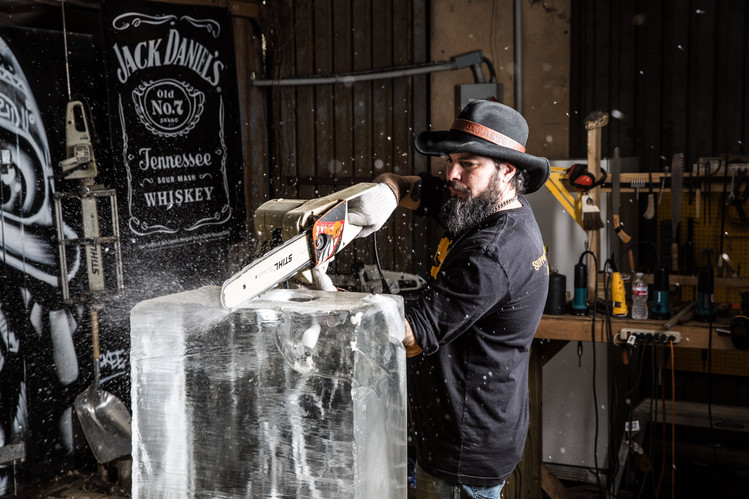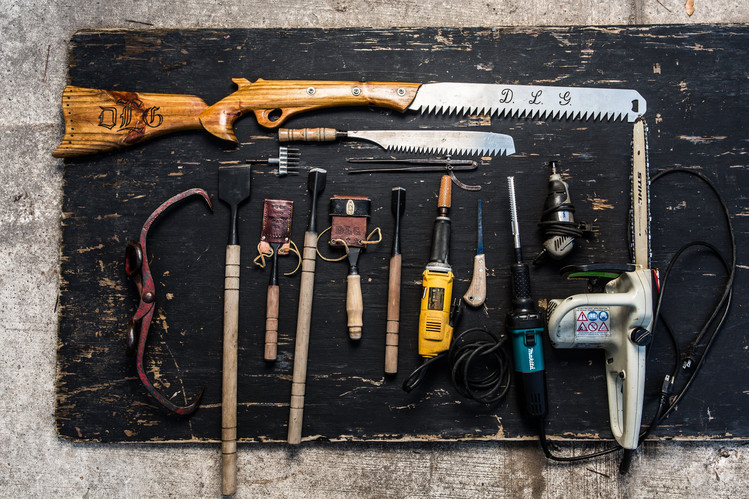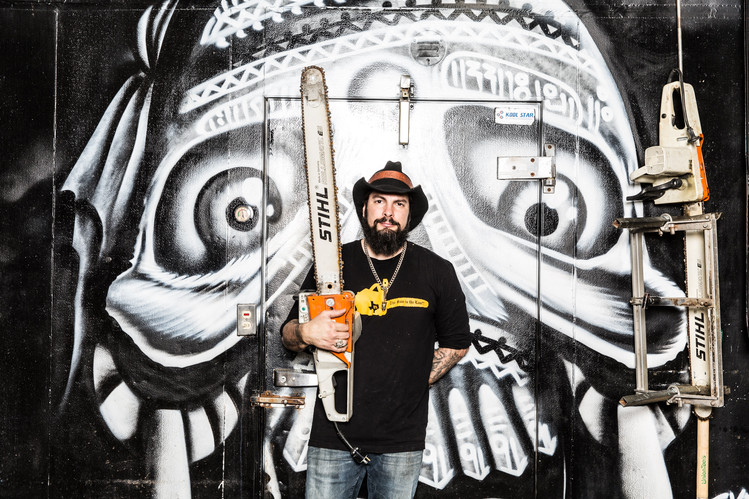WHAT'S IN YOUR BAG?
By HILARY POTKEWITZ
Rolando De La Garza knows his checked luggage can draw a lot of attention. The 41-year-old ice sculptor travels with chain saws, razor-edged chisels and ice picks. Occasionally, the Transportation Security Administration confiscates something. “I’ve lost four chain saws to the TSA in seven years,” he says.
Mr. De La Garza, known professionally as Reverend Butter for the way he cuts through ice (“like it’s butter,” he says), runs the DLG Ice Factory in his hometown of Houston. For most of the year, he creates sculptures for corporate events, private parties and live performances, ranging from giant logos to ice bars and wedding centerpieces. But from January to April, his calendar is full of ice-carving competitions far from Texas.
In March Mr. De La Garza will fly to Fairbanks, Alaska, for the World Ice Art Championships, a month-long winter festival that culminates in a five-day ice-sculpting competition. “I like the heat, so it’s always a shock to the system,” he says.
At home, he works in cowboy boots and a cowboy hat. But his uniform for northern exposure includes snow boots, snow pants over his jeans and several pairs of gloves. “Carving in Alaska you feel like an astronaut trying to adjust your chain saw with massive gloves on,” he says.
Mr. De La Garza and his teammates took second place at least year’s Alaska event with a 20-foot-tall sculpture of a pirate ship being broken apart by a giant octopus.
During the frenzy of the annual competition, the sculptors carve late into the night. Mr. De La Garza says he is always caught off guard by the Northern Lights. “You’ll be working on your own and look up and see the lights dancing,” he says. “One of my goals is to bring my mom to see them.”
Mr. De La Garza often draws a sculpture in his sketch pad before revving up the power tools. He uses a chain saw to slice away bulk. For shaping, he turns to his set of seven highly-sharpened chisels. He carries them inside heavy-duty leather sheaths, which he makes himself. “If your tools aren’t covered, your bag will come out sliced to hell,” he says.
He brings a Dremel tool for detail work. He keeps everything sharp using a leather strap and a grinding disk. “Our hotel rooms are full of sparks and dust because we’re sharpening our chain saws,” he says.
Mr. De La Garza also travels with a propane-torch attachment (he buys a fuel cylinder at his destination) that he uses to create different textures. “Fire makes the ice really smooth and shiny,” he says.
Training in Texas has taught him to work fast, he says, which can give him a competitive edge. Once he takes a block of ice out of his walk-in freezer, he has only about an hour to carve before it starts melting and has to go back in. He makes large sculptures in sections and fuses them together with dry ice.
“If the temperatures are above freezing [at a competition], a lot of the northerners freak out,” he says.
Mr. De La Garza says that as a child he was always doodling, filling notebooks and margins. When he announced that he was going to be an artist, his parents said, “great, but what are you going to do for a living?” he recalls.
His father was a machinist who fabricated parts for local factories around Houston. He learned the trade and worked with him until about age 20. “I knew I wouldn’t be happy making a thousand of the same screws over and over,” Mr. De La Garza says.
He became a tattoo artist but hated the late hours. He enrolled in culinary school, where at age 23 he first encountered an ice sculpture while working a Christmas banquet. “I love how the ice is temporary. Only a select few get to appreciate it,” he says.
Occasionally, disasters happen. Last month, he was hired to do a centerpiece for a wedding—6-foot-tall ice letters spelling the newlyweds’ last name. Shortly before guests were scheduled to arrive, the hotel’s banquet table buckled and all the letters slid off, shattering into pieces. It was a $3,000 job. He returned the money. “That one hurt,” he says.
Joining Mr. De La Garza for that job was his 10-year-old son, Bruce, who sometimes goes by the nickname Biscuit. The pair drove home holding hands. “Just having Biscuit there, I wasn’t as devastated as I would have been,” he says. “Without him, that night would’ve probably ended with a lot of whiskey.”









